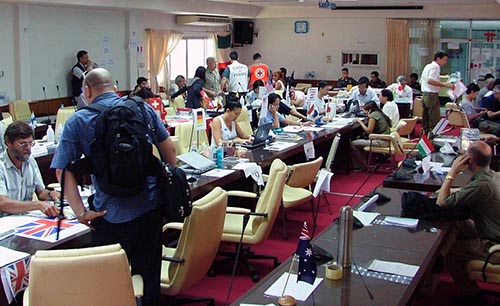Consequence Management

In crisis management, it is the consequence of the crisis that matters not the crisis itself. Often people plan for or focus on specific events. They are then surprised when the event does not follow a predictable path. For example, many people have used the term “unprecedented” to describe the loss of MH370. While the specific event is rare, the consequences of the event are not. The consequences are predictable and therefore manageable.
Address the consequences and you can address the crisis. What are the consequences? In broad terms they are:
- Chaos in management organization caused by the need to react to a sudden, expected and unusual event, which has likely caused injury or death.
- A large number of people, those directly affected by the event and their families, who need immediate information and direction regarding what to do.
- Non-stop 24-hour media coverage ranging from wild speculation to authoritative reports, all of which impact families, political actions and investor reactions.
- Thousands of phones calls from concerned family members, media and others seeking information about their loved ones and the situation.
- Numerous unanswered questions: What happened to cause the crisis? Was it an accident or intentional? Is there a risk to other current operations?
- Immediate need for funds to pay for the response and provide financial support to those directly affected and their families.
- A vast amount of disorganized and changing information generated by multiple sources – information that must be managed and shared.
- Multiple government agencies and other national governments demanding information, responding with their own actions, at times working contentiously with each other.
- Deceased people who need to be recovered, identified and repatriated; or missing people who eventually may be declared dead.
- Potentially thousands of personal belongings that need to be recovered, processed and returned to legal owners.
- Complete disruption of all business activities.
- Potential vacuum in leadership if the CEO and other key leaders do not immediately move from management roles to leadership roles.
Successful organizations focus on these consequences, and develop systems that are prepared to immediately react. So when a crisis occurs it is does not matter what the specific event is, where it occurred or when it occurred. They respond. They also understand that the consequences are universal but the people affected are individuals. So the care is individual and based on the person’s culture, not the organization’s.
How do they do it? They follow the 12 guiding theories of successful crisis management. We call them the 12 Principles. These 12 principles are aligned with possible range of consequences of a crisis. The consequences of a crisis are many. For those directly involved they are also life changing. They can be managed. Organize your crisis management programs by functional areas, which address specific consequences. Have core teams that can quickly be increased, scale the response based on the number of people affected by the event. In addition to the trained people, there should be checklists, ready-to-go equipment kits and data management systems. This is how you manage the unmanageable.
Doing this allows organizations to maintain long term operations, transitioning people directly affected throughout the commonly established phases of recovery and to what will be their new normal. That is after all the goal of crisis management. The old normal will for many not exist, but instead be replaced by the new normal.
It is not easy, but it is simple. Because the same people don’t have to do it very often (a good thing) the experience is not greatly shared and therefore many start the process and learn as they go. Unfortunately, there is a not a grade for this, the impact for the families and the organization is measured in damaged lives and millions of dollars.

Rana Khalid Mahmood
I am really thank full for 12 consequences management rules it should be mandatory adopted by the big organization and major events like Haj gathering due to lake of consequence management not only the people face the consequences but their families faces the problem to even know the information about their beloved family member.
So I will request to all of responsible do consider the 12 Golden Rules of Consequence Management program.
Regard.
Rana Khalid Mahmood Chief Safety Officer ALSONS